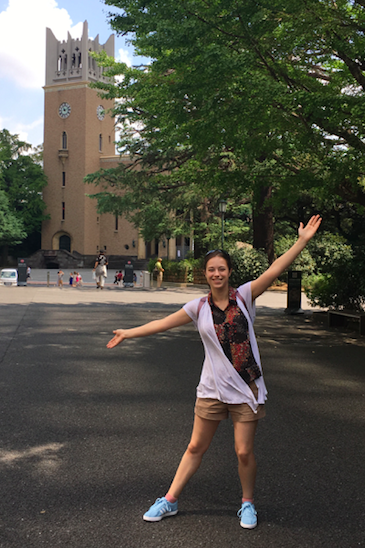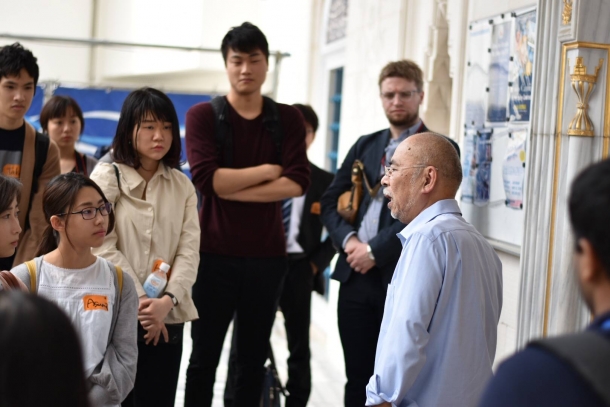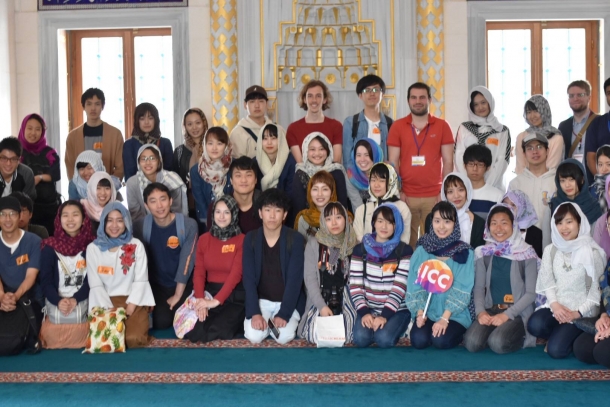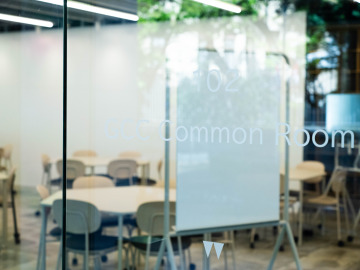Dana Benelli
3rd Year Undergraduate School of International liberal Studies

This May, I had the honor of taking part in the ICC group tour and visit to the Tokyo Camii mosque.
The program consisted of two main parts: a guided tour and a prayer observation, but as we all soon discovered there was so much more in store.
My reasons for participating were as varied as they were simple: I wanted to understand. I wanted to learn more about Muslim culture, more about Islam itself, and was curious to hear about how the congregation adjusted their faith to the realities of life in Japan. In my home country I already had some experience with Muslim classmates, had attended local interfaith events, and knew somewhat about the basic tenants of Islam, but upon signing up for the tour I realized that I had yet to visit a mosque in-person. It seemed funny to think that my first-ever visit to a mosque would happen in Japan, a nation not known for Islamic culture and nowhere near the Middle East, but that was also part of what made it so intriguing.
 During our visit to Tokyo Camii, we were treated to a guided tour by one of the members of the community, with accompanying English translation. The tour led us from the outside to the inside of the mosque, giving us insight on topics that ranged from architecture to religious services and their significance. After the tour we gathered into groups for informative chats with Muslim students who told us more about their experiences with their faith and with living in Japan. Finally, we were led into the mosque and allowed to observe the noontime prayer session. There were also bonus discoveries such as a market in the main hall below, selling beautiful Turkish clothes and snacks, and even the surprise option of staying longer afterward to watch a wedding confirmation ceremony take place.
During our visit to Tokyo Camii, we were treated to a guided tour by one of the members of the community, with accompanying English translation. The tour led us from the outside to the inside of the mosque, giving us insight on topics that ranged from architecture to religious services and their significance. After the tour we gathered into groups for informative chats with Muslim students who told us more about their experiences with their faith and with living in Japan. Finally, we were led into the mosque and allowed to observe the noontime prayer session. There were also bonus discoveries such as a market in the main hall below, selling beautiful Turkish clothes and snacks, and even the surprise option of staying longer afterward to watch a wedding confirmation ceremony take place.
At all stages on our journey our sense of wonder only increased. Our tour guide was bright and engaging, providing lots of information both specific to the Camii itself and to Islam as a whole. I felt like I was able to savor the kind of expertise that can only be learned from someone first-hand. The students who talked with us were kind and gracious when answering all our questions. Going downstairs, I bought my lunch from the variety of Turkish snacks for sale, many of them handmade. Children walked purposefully past us as we sat in the balcony for noontime prayer. We received a small glimpse into a thriving community. We felt welcomed.

The trip was also a valuable experience in getting the chance to participate in Muslim culture, which included conforming to the rules and requirements set by the environment. As a woman, the requirements were especially noticeable to me—modest full-length clothing, which I had expected, and also covering one’s hair. I had never tried to wear a hijab before, and my first attempts at covering were embarrassing, leaving the back of my head exposed and gaps everywhere. I’ll never forget the gratitude I felt toward the accompanying female students who so kindly helped me. For me personally, one of the most memorable parts of the trip was when the weight of the scarf around my head went from feeling strange and limiting to becoming soft and reassuring with each turn of my head, like a constant weight that made me feel connected to something that we were all participating in. Although I thought I understood from an outside perspective peoples’ reasons for wearing a hijab, after wearing it my perspective was entirely changed. It turns out there really are some things you can’t fully understand until you walk a mile in a person’s shoes—or headscarf.

All of us on the trip learned some of the basics of Islamic culture and tradition, including many facts specific to this mosque, but also a sense for how it fit into Muslim life as a whole. It was easy to see the close relationship of the Muslim worshippers to their mosque, and their mosque to them. By observing the noontime prayer we were able to learn the form and feeling of one example of worship. It was not what I expected—much shorter, deeply meditative in nature, grounding rather than restricting. I felt deeply impacted after speaking with Muslim students first-hand, including a few who attend Waseda. In the weeks that followed, seeing each other on campus again only reinforced that sense of connection and human links.
In short, the ICC guided trip to Tokyo Camii was everything I had been hoping for and more. Attending this excursion made me more aware of a lesser-known side of Japan, and more conscious of a sense of connection with other human beings, not only in terms of religion but also geographic location. It was an excellent experience made all the more valuable for how unexpected a mosque in Japan might be, resulting in lots of knowledge and a unique experience that I am honored to bring back to my own country.





